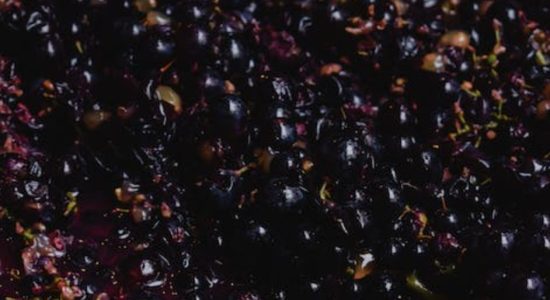This Is How Long It Takes To Make Wine! » (10-Step Guide)

Making wine is a very interesting hobby to adapt, but how long does it actually take to make wine?
This blog post is what i learned about making wine at home.
How Long Does it Take to Make Wine at Home? 2 months is the minimum time taken from start to finish until you can drink your homemade wine. However, most, if not all winemakers will highly advise against drinking your wine after just 2 months. The longer you let your wine age the better the taste will be.
Read through this blog post as I dive into the minimum time taken to make wine, and why you shouldn’t do it!
I will also dive into the equipment needed for homemaking of wine as well as give you a simple guide to delicious homemade wine!
Read also: Wine Making Kits For Beginners
Now, How Long Does it Take to Make Wine at Home?
The major difference in homebrewing wine versus beer is the time it takes to make a simple batch of wine compared to beer.
The fermentation of wine generally takes a minimum of 2 weeks, and then 2-3 weeks of aging before it’s even ready to bottle.
The longer you bottle your wine, the better the results. Read more about this topic on this article.
As you may know, wine is aged to give it more taste and general mouthfeel as well as color and other properties. Rushing the winemaking process is widely considered a waste of good wine among homebrewers of wine, and is highly frowned upon.
If you want to simply make and taste your own wine fast, you can, but aging it, especially in the bottle will increase the flavor.
Here is a little cheat-sheet of how different aging times affect your wine in the bottle.
| Wine Aging | Properties |
| 1 month | The definite minimum time it takes before you can even taste your wine, anything shorter results in bad tasting wine |
| 3 months | Wine has matured more, and gained increasing flavors and distinctions |
| 6 months | The typical time for aging wine, both red and white. Here your wine has a great taste, and doesn’t really need any longer maturing |
| 10+ months | Matures the flavor of your wine even further. Can create more bitter, unique flavors. The longer you age, the more unique |
So as you can see, the longer you age your wine the better wine you’ll probably end up with.
Check out the video guide here, or scroll further down for a written guide!
How Long Should You Age Your Wine?
We’ve talked about the minimum time in general of wine to age and be ready for drinking, but what determines how long you should age different types of wine?
Wines you make at home all need to age for some time, but pretty much all store-bought wine is ready to drink immediately. Actually many store-bought wines don’t even get better with age.
I’ll explain some properties to wines that can change their aging and different parameters you may have to look out for when wanting to age your wine.
- Red or White Wine. Generally speaking, red wines are the wines that benefit mostly from aging. White wines and rosé wines have a more “set-in-stone” aging process and don’t benefit much from any further aging than necessary.
Here is a simple table showing the aging potential of different red wines:
| Type of Wine | Aging potential |
| Merlot | 7-17 Years |
| Pinot Noir | 10-12 Years |
| Syrah | 5-15 Years |
| Zinfandel | 5 Years |
| Malbec | 10 Years |
| Sangioevese | 7-17 Years |
| Tempranillo | 10-20 Years |
| Aglianico | Up to 20 Years |
| Nebbiolo | Up to 20 Years |
| Carbanet Sauvignon | 10-20 Years |
- Screw Cap versus Cork (Amazon links). Depending on whether you use corks or screw caps for sealing your bottles of wine, your aging potential varies. Wines closed with a cork is never fully sealed, and allows some oxygen into your wine bottle. This can help your wine develop new tastes and mature better over time.
If you are using a screw cap, your wine is probably not meant for aging for multiple years as displayed earlier. Screwcap wines are usually your “everyday” wine, which can be opened and enjoyed and then put back into storage, whereas a longer-aging wine with a cork is often enjoyed in full the day you open it for the best experience.
Interesting read: Learn How to Recork Like a Professional
- Price. If you are making a more expensive variant of wine, or you buy an expensive bottle of wine, the aging potential is often bigger compared to the cheaper variants. Cheap wines taste great, but are, as mentioned, often for drinking within a short time after buying. The potential of aging for a better wine tasting experience often goes hand to hand in what you invest towards making it.
Read Also: Best Wine Making Kits 2020
How to Store Your Wine
When you want to age your wine it needs the right environment to have the most successful aging process. Here are some general guidelines on how to properly store your wine:
- Dark. Keep your aging wine bottles away from sunlight, as it can damage the content of your wine
- Cold. Wine needs to be stored cold, which is why basements are often used as they have a rather constant temperature and humidity which can be fitted perfectly for wine aging.
- Wine Fridge. If you have no basement, using a fridge with set temperatures is a good alternative. The downside of this is that if using cork bottles, you won’t get as much fresh oxygen into your bottle as if you just have your bottles aging freely in a basement. Check out some great examples on this article.
- Right Temperature. The general guideline is to keep the room or fridge you are using for aging your wines at 55F to 60F.
Read also: Find the Best Dual Zone Wine Cooler
So, How Long Does it Take to Make Wine at Home?
In conclusion, the minimum time it takes from making your own wine to being able to taste is 2 months. This includes the entire process of making it, the fermentation process and a minimum bottle aging process.
It is very ill-advised to rush the opening of wine.
TIP: Follow the instructions on the wine you are making, and let it age a bit more compared to opening it too soon.
Easy Way to Make Wine (My 10 Steps)
You can make homemade wine like a pro quite easily. All you need is some rather simple equipment and ingredients to make your own tasty wine.
Ingredients:
- 16-20 cups of fruit
- 2 Cups of sugar(table sugar) or honey
- Water (can be purified for safety)
- A packet of yeast suitable for winemaking
Equipment:
For this recipe you don’t have to get all fancy, here is the equipment you will need:
- Airlock
- Bottles with screw caps or corks
- 2 Gallon glass, plastic, ceramic or metal jar/crock suitable for winemaking.(pick one with a lid)
- 1 Gallon carboy container
- Tube for transferring/siphoning
- (Optional) Hydrometer for measuring alcohol content and gravity
Step #1
Make a choice of fruit, the typical choice here is grapes, since they are the type of fruit that generally performs best when making wine. Make sure the fruit you use is mature, but not over-mature for the best tasting results.
Using organic fruit is seen as the best choice since they don’t contain any chemicals that may have a chance to ruin your wine.
Step #2
Wash your fruit to make sure there is no dirt or small insects/bacteria present. Make sure you don’t break the surface of your fruit since this will waste the nice sugary content of the fruit, which your wine needs for fermentation.
Fun fact: seasoned winemakers don’t wash their fruit since they use the natural yeast found on the surface of the fruit, which is mostly washed off when doing this step. This isn’t relevant for this recipe, but keep this in mind if you ever transition into naturally fermented wine recipes.
Step #3
It’s time to get hands-on. Take your crock and crush your fruit how you see fit and make sure you smash them enough to get all their nice sugary juiced flowing out. The amount of fruit you need to smash should be enough to almost fill the crock.
Step #4
Add your choice of sugar or honey into your fruit juice. Depending on what type of fruit you have chosen you may have to increase the amount of sugar or honey you add.
TIP: Don’t worry about adding too little, since you can gradually add more sugar during the fermentation process.
Just make sure you don’t overdo it, and stick to the 2 cups for now.
Step #5
Open up your yeast and add it to the mixture, stir it around and dissolve it evenly in your mix.
Step #6
You’ve added your yeast, and now its time for the fermentation process to kick-off. Cover up your crock with a seal that allows for some air to get in, but not any bugs or dust, etc. Place your covered crock in a room that has a temperature of about 70F and leave it overnight.
REMEMBER: It is important to store the mixture in a place not too cold and not too warm.
Too warm can kill the yeast outright, and too cold will just make the yeast go dormant and it won’t start the fermentation process
Step #7
Over the course of the next 3-5 days, you should stir your mixture a few times a day. You should start seeing bubbles, which indicates that the fermentation is taking hold. You can track your process with a hydrometer, which can help you indicate whether or not your fermentation process is working, and if it’s nearing an end.
Step #8
After the 3-5 days, the bubbling of your mixture should start to slow down, which indicates it is time to transfer your wine mixture to your carboy. Once you’ve siphoned your wine over to your carboy using your tube for this purpose, it is time to put on the airlock. Adjust your airlock to the opening and allow it to release gas but keeping oxygen from coming inside and spoil your wine
Step #9
Now comes the boring part. Let your wine age for a minimum of a month, but if you have the patience let it age for even longer, upwards of a year is good. If you add any extra sugar, make sure to age your wine longer than the 1 month, as it needs time to absorb it.
Step #10
It’s finally time to bottle your wine, Siphon your wine into your bottles, and make sure they are clean. Cork them up and store them in a cool dark place. I would recommend aging your wine for at least another week before tasting, but once again aging them for longer will give a better taste.
Congratulations, you’ve just made your own homemade wine!
NOTE: Remember that the distribution of homemade alcohol is illegal.
Do you want more recipes? Make Muscadine Wine at Home in 7 Steps
Can Homemade Wine Make You Sick?
The quick answer is that homemade wine, in general, can’t make you sicker than regular store-bought wine.
However, the chance of making errors when homebrewing wine is obviously higher than the manufactured wines you see in stores.
Homebrewed wine can’t kill you unless you really mess up.
The process of making both beer and wine simply doesn’t allow hostile bacterias that can make you sick on a life-threatening scale.
There are some things that can go wrong tho, that might give you indications that it is the winemaking you sick, but usually, it is due to human mistakes when brewing the wine.
Here are some things that can go wrong and possibly make you a bit sick when drinking and making homebrewed wine:
Lack of Sanitation
This is a general rule when homebrewing anything, always sanitize literally everything (Amazon link), this includes all your equipment, bottles, airlocks, tubes, vials, and even some ingredients. Along with this, you can even purify the water you use to completely delete any form of threat that hostile bacteria can enter your wine batch.
Use of Natural Yeast
In an earlier blog post, I talked about the natural fermentation that some winemakers use. These recipes using natural yeast rely on the yeast found on grapes and in the air, but generally, have a higher chance of contamination compared to using manually added yeast.
Using this method, you allow yeast into your wine, but it also allows for unwanted bacteria to possibly enter your wine batch, which can create complications.
It probably won’t kill you, but it can certainly make your stomach upset. The chance that these bacterias actually affect you aren’t high since as mentioned, most bacteria simply can’t live in the wine as the fermentation process takes hold.
TIP: It may be a good idea to stay away from natural fermentation if you are not very experienced.
Use of the Wrong Container
If you are putting together your own homemade kit, keep in mind to acquire a food-grade container (Amazon link). If you don’t check whether or not your container is food grade, it can actually contaminate your wine.
In very rare cases you may actually get very sick or even get lead poisoning if not checking whether or not your plastic/metal container is suited for winemaking.
Headaches
On several forums, you can read about people complaining that their homemade wine gives them headaches compared to store-bought wine.
The reason for this is quite simple science and happens due to an increase in histamines and tannins in the homemade wine.
When homemaking wine the balance between the two can shift quite regularly, and make some of your batches give you quite nasty headaches.
If it continues to be this way, you may want to consider switching up your processes or find a new recipe.
These are the usual things that can happen if your winemaking goes wrong.
And as you can see, they really aren’t that bad, and most are very rare. If you are interested in homemaking wine, go for it, the chances of failing on a health-threatening level are very slim.
As long as you make sure to sanitize everything, and maybe stay away from natural fermentation as a beginner, you are not very likely to run into the risks mentioned above.
Read Also: Best Moonshine Still Kits – Top 7 Compared







